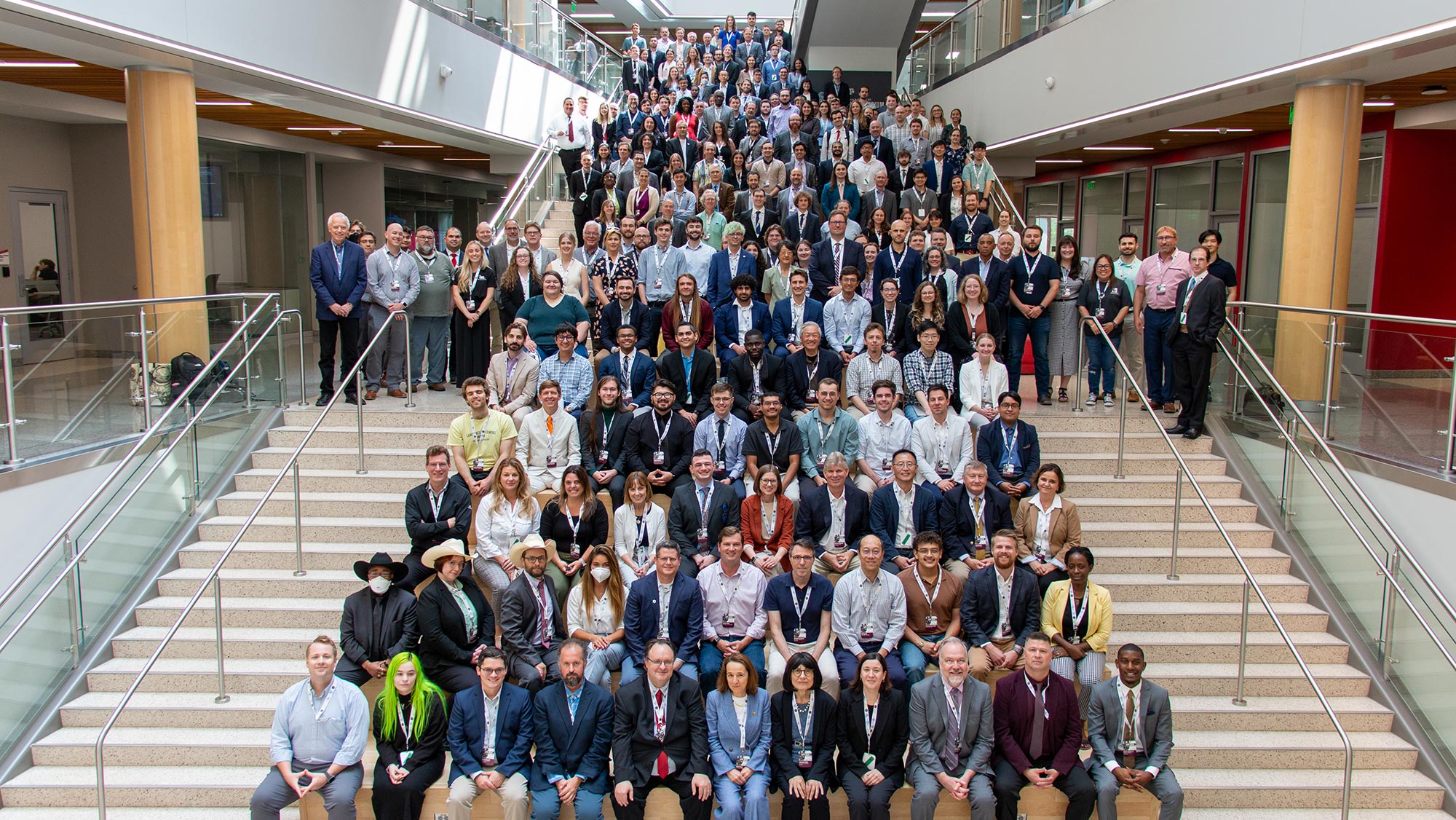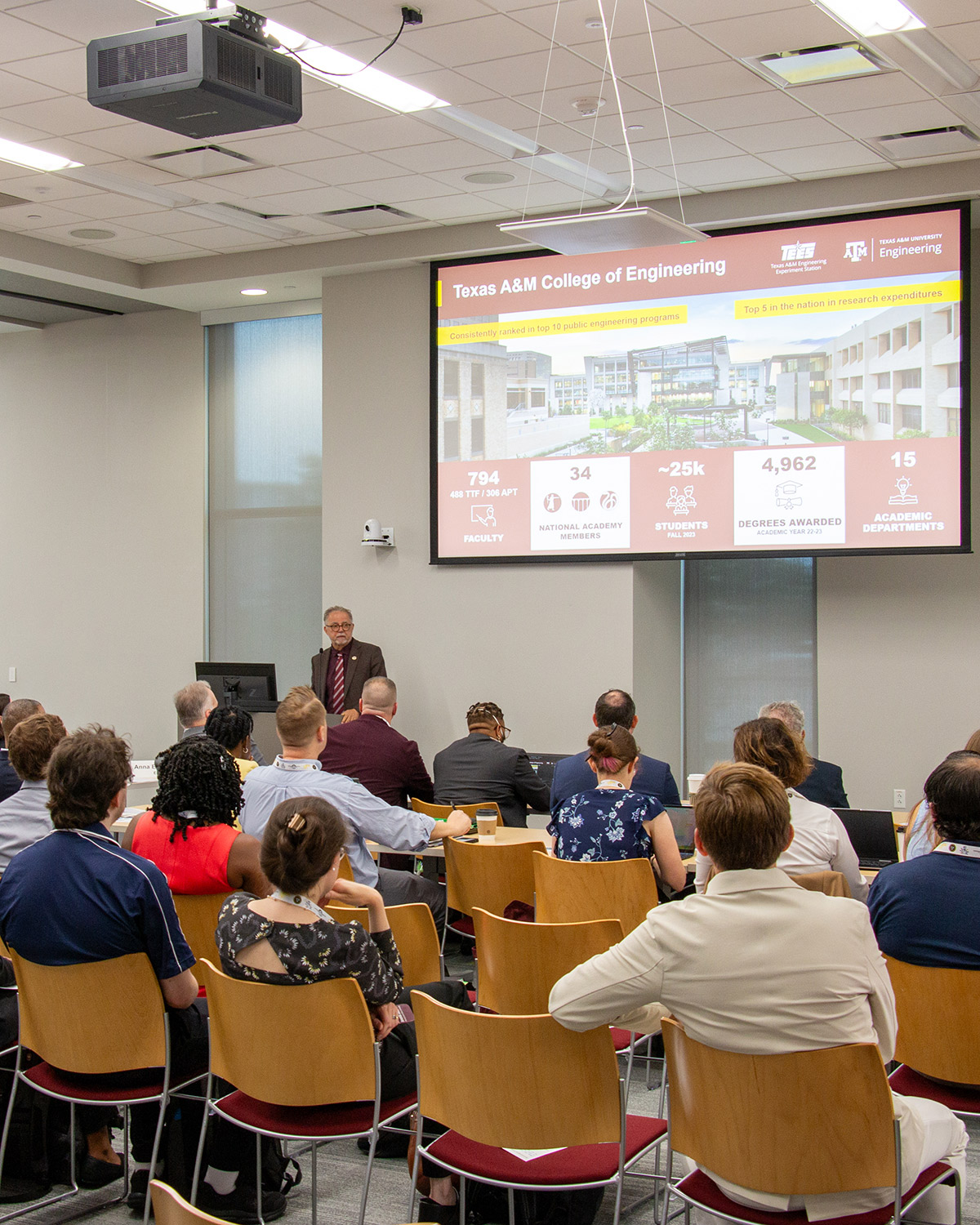
Over 150 students from universities across the country gathered at Texas A&M to share their latest research in detecting and monitoring the use of nuclear materials at a program review meeting run by the National Nuclear Security Administration (NNSA)’s Defense Nuclear Nonproliferation (DNN) R&D office and its university partners. The meeting gathered close to 300 attendees from each of NNSA’s funded university consortia in one location on June 4 through 7.
NNSA’s annual University Program Review (UPR) includes four university consortia, each covering different aspects of nuclear security and nonproliferation. These include the Consortium for Enabling Technologies and Innovation (ETI), led by the Georgia Institute of Technology; the Consortium for Monitoring, Technology, and Verification, led by the University of Michigan; the Nuclear Science and Security Consortium, led by the University of California, Berkeley; and the Consortium for Nuclear Forensics, led by the University of Florida. Texas A&M is part of all four consortia and was selected to host the UPR meeting as a member of the ETI consortium.
The annual UPR meeting brings together DNN R&D leadership, representatives from the U.S. Department of Energy’s national laboratories, researchers and university faculty, and students who are working on NNSA-funded research. These students are required to attend each UPR meeting to present the latest progress on their work, either through posters or 15-minute talks. This year, 265 people attended the meeting at the Zachry Engineering Education Complex, the largest UPR meeting to date.
“We are very grateful to Texas A&M University for hosting our annual University Program Review at the fantastic Zachry Engineering Education Complex,” said Craig Sloan, director of the Office of Proliferation Detection within NNSA’s DNN R&D. “UPR provided an excellent opportunity for students and faculty to showcase their research, and a highlight was seeing the extensive collaborations between the students and their national laboratory partners.”
Sixty students from institutions across the country gave talks on their research projects. The first evening of the meeting also included a poster session featuring 96 more students and their research. The week concluded with tours of some Texas A&M facilities, including the nuclear reactor at the Texas A&M Engineering Experiment Station, the Cyclotron Institute, engineering laboratories at the Zachry Engineering Education Complex, and Disaster City.
UPR provided an excellent opportunity for students and faculty to showcase their research, and a highlight was seeing the extensive collaborations between the students and their national laboratory partners.
Typically, a university that leads a consortium hosts the annual UPR meeting; Georgia Tech hosted the 2021 meeting. For the first time, however, the torch was passed to a partner institution — Texas A&M — to host this year’s meeting.
“Because we hosted one at Georgia Tech in 2021, we decided maybe it's time to shift gears a bit and have one of our partners host the workshop, and bring some visibility to Texas A&M,” said Anna Erickson, a Georgia Tech professor and the director of the ETI consortium.
Erickson said that the consortia members are grateful for the work by Texas A&M nuclear engineering professor Pavel Tsvetkov and his students, who worked hard to coordinate the event.
The organization of the meeting, and using the Zachry Engineering Education Complex as the venue, was perfect for fostering communication and networking between students, faculty, and laboratory representatives, she added.
“This is a very tight community,” Erickson said. “We all have a common goal to prevent nuclear proliferation, and our students have this much bigger vision when they join this community. The students got to not only see faculty and students but also collaborate with national lab partners.”
Hosting the UPR meeting at Texas A&M also gave consortia members from across the country the opportunity to see what Texas A&M has to offer, especially for the guests who toured the facilities.
“There's just so much going on, and it was nice to get some more people into the university to understand just how big it is and how much is going on here,” said Daniel Watson, a Texas A&M nuclear engineering doctoral student who helped run the event. “I only wish that we could have taken more time to really show them much more of the university.”
A learning and career-building opportunity for students
During the meeting, Watson also presented his work on remote surveillance of nuclear activities. For Watson, even more important than the presentation was the networking opportunities and conversations about his work.
“Like all the other conferences, seminars, workshops, it's an opportunity for you to sell yourself,” he said. “You're meeting the leaders within the community, meeting the various stakeholders, getting a grasp on the pulse right now. You're getting that name and face connection, something that's so tangible and very important in advancing one's career.”

One Texas A&M presenter, Lavanya Upadhyaya, is a second-year master’s student researching the corrosion of metal alloys in molten salt nuclear reactors under different conditions. Beyond participation in UPR, Upadhyaya has benefitted from career-boosting opportunities offered by NNSA, such as receiving internships at Lawrence Livermore and Oak Ridge national laboratories and connecting with a mentor at Los Alamos National Laboratory (LANL).
“Getting a chance to attend these conferences has been a great experience, not just to speak or present work, but also to talk with so many people and learn different perspectives,” she said. “There are just so many opportunities, and I feel very fortunate to be part of this.”
Jenna Garcia, a doctoral student from Texas A&M developing chemistry processes to analyze radioactive sources, presented a poster at the UPR meeting. She was able to connect and reconnect with colleagues from LANL, where she has worked for three summers.
“I was surprised at how small the world seems whenever we're all going to these events,” she said. “That was a very positive experience.”
Patrick O’Neal, who recently received his doctorate at Texas A&M for work using machine learning to identify the origin of plutonium samples, also participated in the poster session. He said that sharing his work at events like this helps him make talking about his research more effective for a wider audience.
“It's fun doing a poster session because people can be much more specific with their questions and get into the nitty-gritty details that interest them the most,” he said. “I also like that you can gauge their understanding to see if you need to re-emphasize something.”
Although Upadhyaya has been learning about nuclear engineering in classes, interacting with peers and their research has brought that knowledge outside of the classroom.
“Through conferences and other events, I've seen some topics that I have learned in my classes being applied in other people's research,” she said. “I've broadened my knowledge by learning what everybody's working on,” she said. “It’s a nice experience, not just to talk or to present work and receive feedback, but also just to be in this community.”